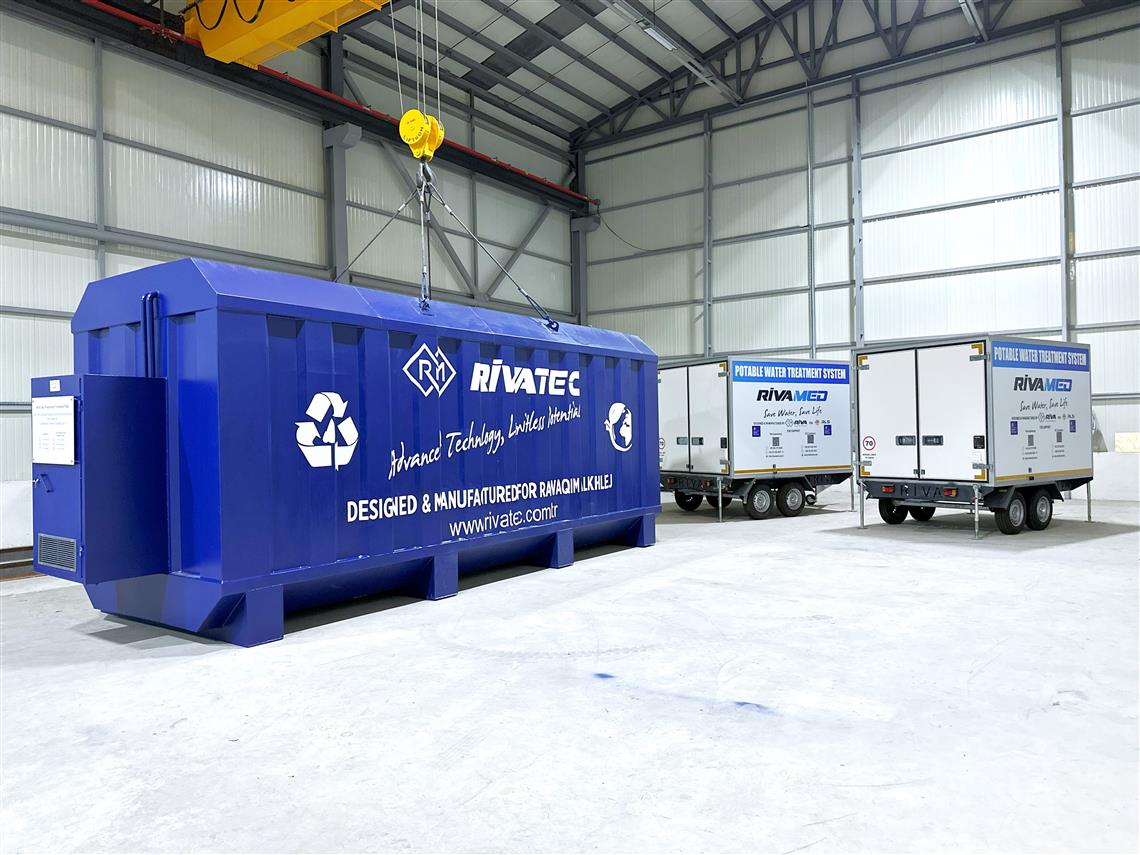THE WORLD'S WASTEWATER NEED AND ITS IMPORTANCE
With the rising global population, the significant increase observed in water consumption brings along concerns for the sustainability of resources. In such times, technologies enabling the reuse of wastewater offer us the opportunity to use our natural resources more consciously and efficiently.
HOW IS WASTEWATER TREATED?
The wastewater treatment process removes pollutants and undesired substances from the water, allowing it to be reused. However, to successfully complete this process, it's essential to determine the final use of the water and its contaminant values. These details influence system design and project planning. Treating wastewater is a critical process for protecting the environment. Preliminary treatment separates large particles and oils, primary treatment settles suspended substances, and secondary treatment biologically decomposes organic pollutants in the water with the help of microorganisms. After undergoing these stages, water can be released back into the environment without harm or reused.
RIVATEC AND ITS INNOVATIVE APPROACH
RIVATEC offers leading solutions in treating wastewater and rendering pollutants harmless in this field. The company's expert team thoroughly analyzes the water content and shapes their systems using the most suitable technologies.

TECHNOLOGICAL WASTEWATER TREATMENT METHODS
The content of wastewater generated from domestic, industrial, agricultural, and other sectors can differ. Advanced technologies such as Membrane Bioreactors (MBR), Moving Bed Biofilm Reactors (MBBR), and Sequencing Batch Reactors (SBR) play a role in making this water suitable for reuse. With these technologies, the harmful effects of wastewater on the ecosystem are minimized, and in some cases, water of drinking quality can be obtained. These technologies, chosen based on their intended use and pollutant values, are also used in the transformation of rainwater, marine, and coastal wastes.
In the health sector, especially for the decontamination of medical wastes, specialized treatment processes using technologies like Neutralization and Disinfection are applied.
During the installation of water treatment systems, depending on the environment's characteristics, we might encounter technological options such as Softening, Active Carbon Filter, Reverse Osmosis, Ion Exchange, and Ultrafiltration.
WASTEWATER TREATMENT PROCESSES
INDUSTRIAL WATER TREATMENT SYSTEMS: WASTEWATER TREATMENT PROCESSES
Industrial activities often lead to the consumption of large amounts of water. The water used can contain various pollutants, and releasing this wastewater into the environment can result in ecological damage. Hence, there's a need to treat industrial wastewater properly. Here's a detailed guide on industrial water treatment processes:
1. PRE-TREATMENT This is the initial process that wastewater encounters. At this stage, the aim is to separate coarse particles, oils, and other large pollutants.
- Grating and Screening: Helps separate large waste (leaves, branches, plastic pieces, etc.) from the water.
- Sand Traps: Removes sand and fine particles from the water surface.
- Oil Separators: Helps separate oils and greases present in the water.
2. PRIMARY TREATMENT
At this stage, the goal is to sediment suspended particles through gravity.
- Primary Sedimentation Basins: Pools where water moves slowly, allowing suspended solids to settle.
3. SECONDARY TREATMENT
In this process, where microorganisms are used, the aim is to decompose organic pollutants.
- Activated Sludge Process: Operates under aerobic (oxygenated) conditions, with microorganisms breaking down organic materials.
- Submerged Filters and Trickling Filters: Process to separate solid particles through filtration.
ADVANCED TREATMENT
At this stage, where advanced treatment processes are applied, the aim is to separate the fine pollutants remaining in the water.
- Chemical Sedimentation: Using chemical substances to adjust the wastewater's pH level, and remove phosphorus and other inorganic substances.
- Filtration: Removing fine particles and some dissolved pollutants through sand or activated carbon filters.
- Disinfection: Killing microorganisms in the water using chlorine, ozone, or ultraviolet (UV) light.
FINAL PROCESSES
At this stage, final touches are made to make the treated water suitable for release into nature or for reuse. This step may typically include pH adjustments, disinfection, and other specialized processes.
Industrial water treatment processes ensure that wastewater is released into nature without causing harm or can be reused. These processes are critically important for environmental sustainability and play a significant role in reducing the industry's impact on nature.
Wastewaters are generally classified into three categories: black, grey, and domestic. During the recovery process of these waters, physical, chemical, biological, and membrane treatment processes are performed. In physical processes, coarse solids are treated; in biological processes, organic materials are addressed, and in chemical processes, challenging pollutants are managed.
The increasing global demand for water and the sustainability of resources are amplifying the importance of wastewater treatment technologies day by day. To protect and reuse water resources, the demand for wastewater treatment systems has become an integral part of modern industrial processes. In this context, Rivamed and Rivatec collaborate on industrial water treatment solutions, creating significant synergy in the sector.
The growing need for water and the necessity for efficient use of natural resources are increasing the importance of wastewater treatment systems daily. Managing this process in a healthy and efficient way is essential not only for maintaining the ecological balance but also for a sustainable life. Solutions and technological approaches offered by pioneering companies like RIVATEC enable this process to be managed more efficiently.